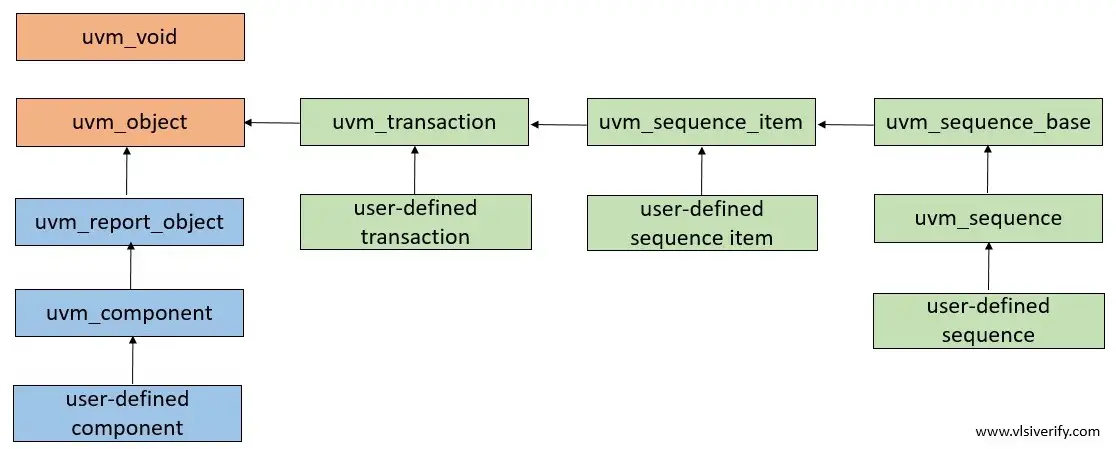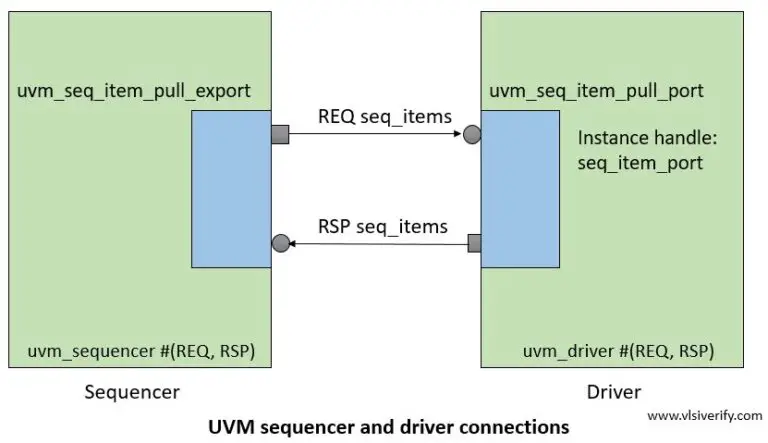UVM Sequence: 5 Tips for Response IDs

In the realm of unified visualization and monitoring (UVM), the UVM Sequence is a powerful tool that forms the backbone of many simulation and verification processes. It is an integral part of SystemVerilog, offering a structured and organized approach to creating and managing sequences of transactions. One crucial aspect of UVM Sequences is the effective utilization of Response IDs, which are essential for maintaining order and facilitating communication between different components of a verification environment.
A Response ID is a unique identifier assigned to each transaction or sequence item. It serves as a vital mechanism for tracking and managing responses, especially in complex verification scenarios where multiple sequences and transactions are involved. In this article, we will delve into the world of UVM Sequences and explore five expert tips for effectively using Response IDs to enhance your verification processes.
Understanding the Role of Response IDs in UVM Sequences

Response IDs are an integral part of the UVM Sequence methodology. They are used to establish a unique connection between a sequence item and its corresponding response, ensuring that the correct action is taken based on the specific transaction. Here’s a deeper look into their role and significance:
- Transaction Identification: Each sequence item represents a specific transaction or event that needs to be simulated and verified. Response IDs help identify and differentiate these transactions, ensuring that the appropriate response is generated.
- Sequence Item Tracking: In a UVM Sequence, multiple sequence items can be active simultaneously. Response IDs enable the verification environment to track the status and progress of each item, ensuring that they are processed and responded to correctly.
- Communication between Components: UVM Sequences often involve interactions between different components, such as drivers, monitors, and scoreboards. Response IDs facilitate clear and unambiguous communication, allowing these components to exchange information and collaborate effectively.
- Error Detection and Debugging: When unexpected responses or errors occur, Response IDs provide a crucial means of identifying the specific transaction that caused the issue. This aids in debugging and troubleshooting, making it easier to locate and rectify problems within the verification environment.
Tip 1: Assigning Meaningful Response IDs

The first step in effectively using Response IDs is to assign them thoughtfully and with a clear purpose. Here are some guidelines to consider when assigning Response IDs:
- Uniqueness: Ensure that each Response ID is unique within the scope of your verification environment. This prevents confusion and ensures that each transaction is properly identified and tracked.
- Consistency: Maintain a consistent naming convention for Response IDs. This makes it easier to understand and manage the various transactions, especially when dealing with large and complex verification scenarios.
- Contextual Relevance: Choose Response IDs that provide meaningful context about the transaction. For example, you could use a combination of the transaction type and a unique identifier, such as
Read_Data_001orWrite_Address_002. This helps in quickly identifying the nature of the transaction. - Avoid Ambiguity: Steer clear of generic or ambiguous Response IDs that might lead to confusion. Instead, opt for descriptive and informative IDs that convey the purpose and nature of the transaction.
Tip 2: Dynamic Response ID Generation
In certain situations, it might be beneficial to generate Response IDs dynamically based on specific criteria or conditions. Here’s how you can implement dynamic Response ID generation:
- Based on Transaction Characteristics: You can generate Response IDs based on the characteristics of the transaction, such as the address, data, or control signals. For example, you could use a hash function to generate a unique ID based on the transaction data.
- Sequential Generation: If your transactions are ordered sequentially, you can simply use a counter to generate Response IDs. This ensures that each transaction has a unique ID in the order of its occurrence.
- Random Generation: In some cases, especially when dealing with randomized testing, you might want to generate Response IDs randomly. This can be achieved using random number generators, ensuring that each transaction has a unique and unpredictable ID.
Tip 3: Response ID Management and Tracking
Effective management and tracking of Response IDs are crucial for maintaining the integrity of your UVM Sequence. Here are some best practices to consider:
- Maintain a Response ID Registry: Create a centralized registry or database to store and manage Response IDs. This ensures that you have a comprehensive record of all the Response IDs used in your verification environment, making it easier to track and analyze transactions.
- Use Response ID as a Key: Treat Response IDs as unique keys in your data structures and algorithms. This allows you to efficiently look up, update, and manage the status of each transaction based on its Response ID.
- Implement Response ID Validation: Implement validation checks to ensure that Response IDs are used correctly and consistently. This helps prevent errors and ensures that the verification environment operates as intended.
Tip 4: Response ID-Based Analysis and Reporting

Response IDs can provide valuable insights into the behavior and performance of your verification environment. Here’s how you can leverage Response IDs for analysis and reporting:
- Transaction Statistics: Use Response IDs to gather statistics about the frequency, duration, and outcome of transactions. This information can be used to identify performance bottlenecks, optimize the verification process, and improve overall efficiency.
- Error Analysis: When errors or unexpected behaviors occur, Response IDs can be used to pinpoint the specific transaction that caused the issue. This aids in root cause analysis, helping you identify and rectify problems more efficiently.
- Coverage Analysis: Response IDs can be utilized to track the coverage of your verification environment. By monitoring the Response IDs of executed transactions, you can ensure that your tests cover a wide range of scenarios, improving the overall quality of your verification.
Tip 5: Response ID Communication and Collaboration
Response IDs play a crucial role in facilitating communication and collaboration between different components of your verification environment. Here’s how you can leverage Response IDs for effective communication:
- Driver-Monitor Interaction: Response IDs enable drivers and monitors to exchange information about transactions. The driver can use Response IDs to send requests, and the monitor can use them to provide the corresponding responses, ensuring a seamless flow of data.
- Scoreboard Integration: Response IDs are essential for scoreboards to compare expected and actual responses. By using Response IDs, scoreboards can efficiently match the expected and actual transactions, providing accurate verification results.
- Team Collaboration: In a collaborative verification environment, Response IDs provide a common language for team members to discuss and analyze transactions. This promotes effective communication and ensures that everyone is on the same page when it comes to verification.
Conclusion
Response IDs are a powerful tool within the UVM Sequence methodology, enabling efficient and effective management of transactions and responses. By following the tips outlined in this article, you can harness the full potential of Response IDs to enhance your verification processes. From assigning meaningful IDs to leveraging them for analysis and collaboration, Response IDs play a pivotal role in ensuring the success of your verification efforts.
How do Response IDs improve the efficiency of UVM Sequences?
+Response IDs enhance efficiency by providing a unique identifier for each transaction, allowing for easy tracking, management, and communication. They ensure that the correct actions are taken based on specific transactions, reducing the risk of errors and improving overall productivity.
Can Response IDs be reused across different UVM Sequences?
+While Response IDs can be reused, it is generally recommended to assign unique IDs within the scope of each UVM Sequence. This practice ensures that transactions are properly identified and tracked, preventing potential confusion and errors.
How can I handle Response IDs in randomized testing scenarios?
+In randomized testing, Response IDs can be generated dynamically using random number generators. This ensures that each transaction has a unique and unpredictable ID, making it suitable for exploring a wide range of verification scenarios.



